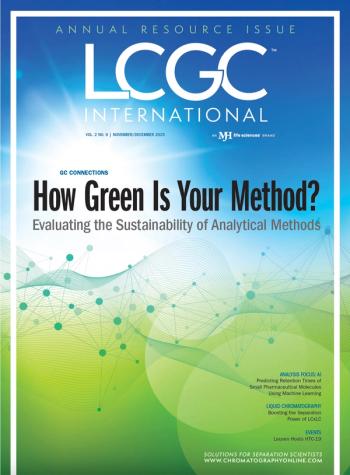
- The Column-08-20-2010
- Volume 6
- Issue 15
Charting the microbial landscape
Research has used chromatography to provide a glimpse into the metalloprotein world, revealing the metals? extent and the promise of new insights for cell biology, microbial growth and toxicity mechanisms.
Metals in proteins provide virtually unlimited catalytic potential, enable electron transfer reactions and have a great impact on protein stability. This means metalloproteins play a key role in many biological processes including respiration (iron and copper), photosynthesis (manganese) and drug metabolism (iron). However, predicting what metals will be present in an organism from the genome is currently impossible because metal coordination sites are diverse and poorly recognized. Research published in the journal Nature1 has used chromatography to provide a glimpse into the metalloproteins world, revealing the metals’ extent and the promise of new insights for cell biology, microbial growth and toxicity mechanisms.
According to the team the new approach shifts the focus from classical protein-based purification to metal-based identification and purification by liquid chromatography, high-throughput tandem mass spectrometry and inductively coupled plasma mass spectrometry. They catalogued the metals in three microbes: one that lives in human intestines, one from a hotspring in Yellowstone National Park and one that thrives in the near boiling waters of undersea thermal vents. The research uncovered a microbial world far richer in metals than ever expected. “We thought we knew most of the metalloproteins out there,” says John Tainer of Berkeley Lab’s Life Sciences Division and the Scripps Research Institute in La Jolla, California, USA. “But it turns out we only know a tiny fraction of them. We now have to look at microbial genomes with a fresh eye.”
1. A. Cvetkovic et al., Nature, 466, 779-782 (2010).
Articles in this issue
over 15 years ago
Developing Malaysian biotechnologyover 15 years ago
I can't believe it's not dieselover 15 years ago
Supporting breast cancer researchover 15 years ago
Characterizing PEGylated Proteins by MALS-UV-RI Detectionover 15 years ago
Musings from the Little Black Book of GC (Part 3)Newsletter
Join the global community of analytical scientists who trust LCGC for insights on the latest techniques, trends, and expert solutions in chromatography.



